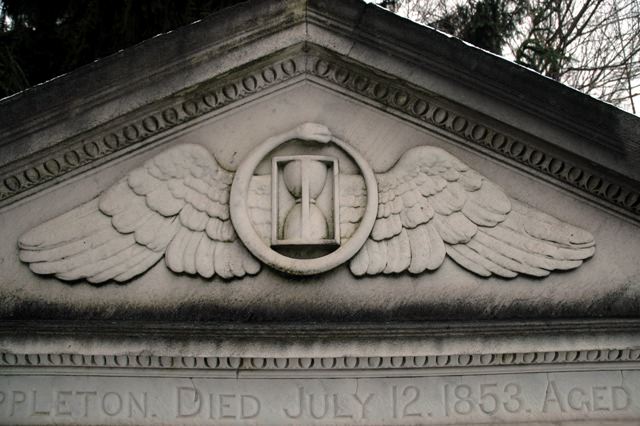Appleton Monument

An auction was held in November 1831 for subscribers who paid a premium to select lot locations. The merchant-philanthropist Samuel Appleton (1766 -1853) paid the most, $100 to get first choice and claimed to top of Cedar Hill on a path leading to the Cemetery’s highest point. Appleton’s miniature Grecian temple was made of marble in Italy, ca. 1838. From a distance the temple’s location on the hill creates the illusion of being far grander in size than its actual proportions of twelve by six feet. There are several symbolic elements on the monument including: ouroboros (a snake eating its own tail) symbolizing eternity, a winged hourglass representing fleeting time, sepulchural lamps atop the memorial as symbols of the lamps of wisdom or eternal life and evergreen wreaths for perpetual rememberance.
“On Hazel [Woodbine] Path also will be seen the most sumptuous and costly erection in the Cemetery, the monument of ‘Samuel Appleton,’ constructed in fine Italian marble, after the beautiful model of the tomb of Scipio Africanus, disinterred some years since at Rome.”
—The Picturesque Pocket Companion and Visitor’s Guide Through Mount Auburn, 1838.
“On Cedar Hill will be seen the very beautiful marble temple, beneath which rest the remains of the Hon Samuel Appleton. A cut of this structure will give the reader a better idea than words.”
—Handbook to Cambridge and Mount Auburn, 1859.
Leave a Reply